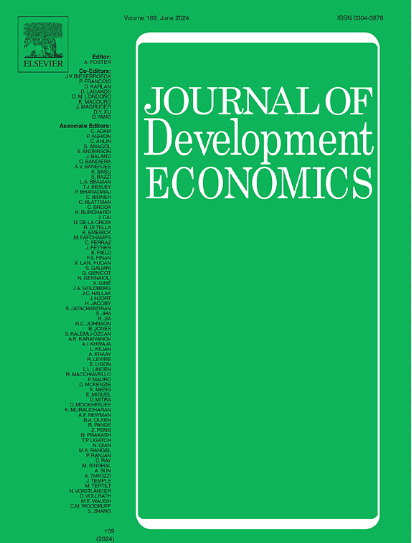Poverty mapping in the age of machine learning
IF 5.1
1区 经济学
Q1 ECONOMICS
引用次数: 0
Abstract
Recent years have witnessed considerable methodological advances in poverty mapping, much of which has focused on the application of modern machine-learning approaches to remotely-sensed data. Poverty maps produced with these methods generally share a common validation procedure, which assesses model performance by comparing sub-national poverty estimates with survey-based, direct estimates. While unbiased, direct estimates can be imprecise measures of true poverty rates, meaning that it is unclear whether these validation procedures are informative of actual model performance. In this paper, we use a rich dataset from Mexico to provide a more rigorous assessment of the modern approach to poverty mapping by evaluating its performance against a credible ground truth. We find that the modern method under-performs relative to benchmark traditional methods, largely because of the limited predictive capacity of remotely-sensed covariates. For a given covariate set, we also find that machine learning produces more biased poverty estimates than the traditional procedures, particularly for the poorest geographic areas.
机器学习时代的贫困分布图
近年来,绘制贫困地图的方法有了长足的进步,其中大部分侧重于将现代机器学习方法应用于遥感数据。使用这些方法绘制的贫困地图一般都有一个共同的验证程序,即通过比较国家以下各级的贫困估计值和基于调查的直接估计值来评估模型的性能。直接估计值虽然没有偏差,但对真实贫困率的衡量可能并不精确,这意味着这些验证程序是否能说明模型的实际性能尚不清楚。在本文中,我们利用墨西哥丰富的数据集,通过对照可信的基本事实来评估现代贫困测绘方法的性能,从而对其进行更严格的评估。我们发现,相对于基准传统方法,现代方法表现不佳,这主要是因为遥感协变量的预测能力有限。对于给定的协变量集,我们还发现,与传统方法相比,机器学习方法产生的贫困估计值更有偏差,尤其是在最贫困的地理区域。
本文章由计算机程序翻译,如有差异,请以英文原文为准。
求助全文
约1分钟内获得全文
求助全文
来源期刊

Journal of Development Economics
ECONOMICS-
CiteScore
8.30
自引率
4.00%
发文量
126
审稿时长
72 days
期刊介绍:
The Journal of Development Economics publishes papers relating to all aspects of economic development - from immediate policy concerns to structural problems of underdevelopment. The emphasis is on quantitative or analytical work, which is relevant as well as intellectually stimulating.
 求助内容:
求助内容: 应助结果提醒方式:
应助结果提醒方式:


